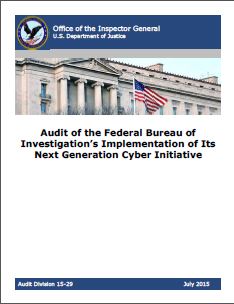As we continue to move to a world wherein all things are networked and even toys now have connections to the cloud, people need to be cognizant and careful. According to the Hacker News, in 2015 the toy manufacturer VTech revealed that they had suffered a data breach which resulted in the exfiltration of personally identifiable information (PII) of nearly 5M adults as well as photos of roughly 200K children. Not only did the breach involve the PII of adults, but also the names, gender, and birthdates of children, which raises a number of additional potential issues, according to the article. Fast forward to 2017, and yet another toymaker has fallen victim to a massive data breach. The Hacker News reported that CloudPets, developed by a California-based company, Spiral Toys, exposed the voice recording of over 2M parents and children as well e-mail addresses and passwords for over 800K accounts. CloudPets are stuffed animals which allow parents and children to send voice messages back and forth via the internet, according to the article. The article further states that Spiral Toys was advised at least four times that their data had been exposed and they failed to take any ameliorative steps.
<opinion>
I have and will continue, to make the argument that cybersecurity requires a baseline approach especially as the number of connected devices grows at a seemingly exponential rate. So long as manufacturers are not required to meet minimum cybersecurity hygiene standards the number of incidents such as those referenced herein will crop up as seemingly innocuous devices become the target of choice due to their lax security protocols and lack of safeguards. In the instances above the cybersecurity measures in place were either non-existent or rudimentary at best. The encryption was weak, the databases were public, and arguably these companies failed to meet the duty of care owed to consumers and what is likely valuable PII. The databases were reportedly devoid of either social security numbers, or credit card information. However, the fact remains that the available data could (and still may) be used as one piece of the puzzle from which additional information can be gleaned, e-mail addresses can be targeted, and passwords can be leveraged to attempt to access additional accounts (in many cases, users have a single password that is used across multiple sites).
This should raise a number of red flags for all of us. Consider the world in which we live, our cars are connected, our appliances are connected, children’s toys are now connected, in each case we are providing at least limited information in order to access and utilize all of our connected devices and in so doing we put a large amount of trust that companies will safeguard that data. However, as we continue to see that is often not the case. This is further exacerbated by the “make it work mantra,” wherein the majority of users simply want products to perform as advertised. Thus, consumers will often forego research and understanding of how/where their data is going and will be used so they can get the product to function as quickly as possible. In the case of these toys, consider a parent who is faced with a child that just wants the toy to do whatever it has been billed and advertised as doing. They are not interested in using complex passwords that are difficult to remember and enter, they are unlikely to research the toy company to determine if they are using two-way encryption or if they offer multi-factor authentication for their devices — they just want the item to work. This raises a whole new set of issues regarding the “human side” of cybersecurity.
This is one area where technology can be implemented which can manage the cybersecurity aspects of IoT devices and yet still provide ease-of-use. The problem being that companies are ultimately profit-driven and thus in the absence of any financial incentive to bake in additional technology to help safeguard data while simultaneously enhancing ease-of-use, companies choose the lowest cost-alternative, nearly universally. This, therefore is one area where the threat of either legal liability or dare I say, regulations can be implemented via legislation that mandates that companies and especially those in the realm of IoT take certain steps with respect to cybersecurity. One of the keys here will be to draft intelligent legislation that does not merely require that cybersecurity protocols be baked in but rather that the additional cybersecurity have enhanced ease-of-use so that opting out of additional security measures would, in fact, be purposeful and intentional rather than merely a button to click to get the product to function online versus navigating through burdensome security-driven setup.
Until then, I encourage everyone to become device-aware and consider the information you are providing in order to get something simply “to work.” In many cases, you may find that having a connected device is neat in theory but scary in practice. Companies perform cost-benefit-analysis on a daily basis — so too, should consumers.






Leave a Reply